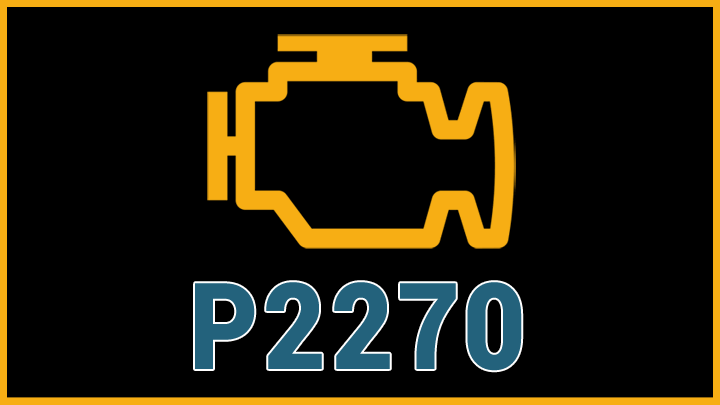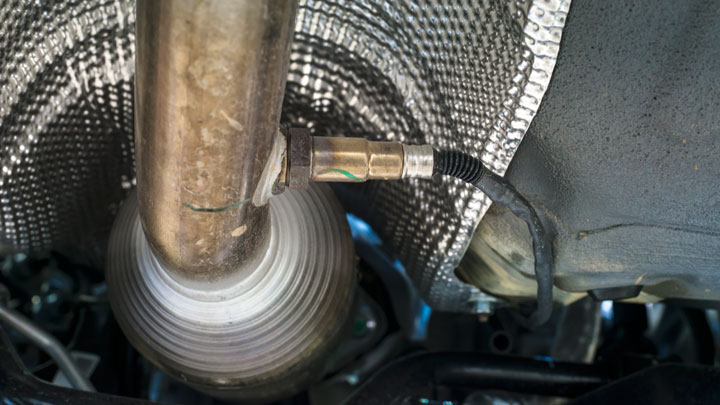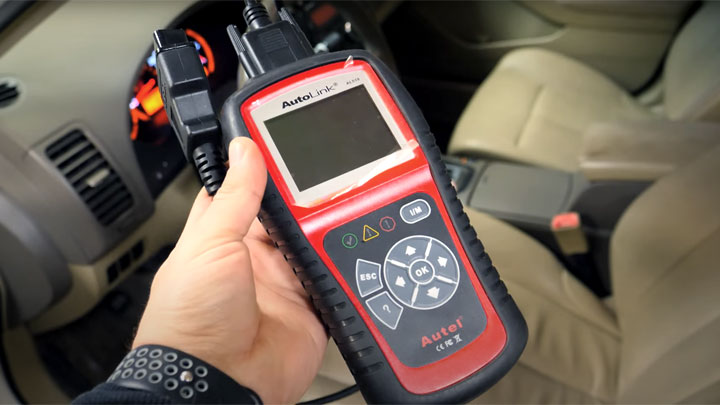P2270 Code (Symptoms, Causes, and How to Fix)
We’ve all been there. You’re cruising down the road enjoying your day only to look down and see the check engine light on your vehicle. It’s enough to send anyone’s heart to their throat, and you can already see the dollar bills ringing up in your head.
If the diagnostic scan tells you it’s a code P2270, what exactly does it mean? What caused it? And how much will it cost to fix?
The good news is that there are worse problems out there. The bad news is, to get the light to go away, you’re probably out a few hundred dollars.

What Does Code P2270 Mean?
Once you rush out to get the code, you still don’t know what that letter and string of numbers mean. But even when you decipher that, what exactly does “O2 Sensor Signal Biased/Stuck Lean” really mean?
The O2 sensor refers to the oxygen sensors that are both before and after the catalytic converter. These sensors track how effectively the catalytic converter is working, and it measures the overall emissions to give the PCM a snapshot of what’s going on.
If everything is working as it should, the PCM (powertrain control module) can fine-tune engine performance with these numbers to both help performance and reduce emissions.
But with the “Signal Biased/Stuck Lean” it means that the oxygens sensor in the bank 1, sensor 2 location isn’t giving the reading it should. (Code P2195 would refer to the bank 1, sensor 1 oxygen sensor). Not only does the reading not look right, but it’s not adjusting to different engine conditions as it should.
This code means the oxygen sensor constantly states that there are not enough fuel vapors in the exhaust, no matter how much fuel the PCM sends to the combustion chamber.
Related: How to Locate O2 Sensors, P0139 Code
Symptoms of Code P2270
Typically, there aren’t a ton of symptoms that come along with a P2270. However, if you’re paying close enough attention to your vehicle you should notice two things.
The first sign would be a slight drop in performance. The PCM no longer can use the readings from the oxygen sensor to fine-tune performance, so it’s making rough estimates to try and get everything optimized.
And it’s those rough estimates that lead directly to the second symptom, increased fuel consumption. Just because the oxygen sensor says there aren’t enough fuel vapors in the exhaust doesn’t make it true.
The PCM can’t fine-tune engine performance, so it’s going to dump a little more fuel than it should into the combustion chamber to get the results you want. This leads to more fuel consumption and more trips to the gas station to fill back up.
Causes of Code P2270

There are a few potential causes of a code P2270, but by far the most common cause of a code P2270 is a faulty oxygen sensor. The oxygen sensor simply gets stuck in one position and can’t adjust anymore, leading to faulty readings. But while that’s the most likely cause for a code P2270, it’s not the only one.
Another potential, if unlikely, cause of a P2270 is PCM failure. If the PCM isn’t working the way it should, then it really doesn’t matter what readings the oxygen sensors send.
There could also be a vacuum leak that’s leading to the faulty readings, but this will typically throw another code instead of a P2270. Finally, there could be a wiring issue between the oxygen sensor and the PCM.
Once again, this is rare because the problem would need to affect the reading in a way where it throws off the return voltage just the right amount. It’s theoretically possible if there’s just the right amount of resistance in the system, but it’s pretty unlikely.
- Faulty oxygen sensor
- PCM failure
- Vacuum Leak
- Electrical issue
Related: How to Find (and Fix) a Vacuum Leak
Is Code P2270 Serious?
While you shouldn’t ignore a code P2270, it’s usually not one of the most serious problems out there. The PCM won’t be able to fine-tune engine performance using the readings from the oxygen sensors, but this shouldn’t lead to any major problems.
But since you will notice a drop in fuel efficiency, you’ll spend more at the pump until you fix it. However, this is if the problem is a faulty oxygen sensor.
While that’s the most likely problem, in the unlikely event that the problem is with the PCM it could lead to other far more serious conditions.
Moreover, while a code P2270 for a faulty oxygen sensor won’t create major issues on its own, it will prevent your vehicle from turning on a check engine light if anything else comes up. It’s driving around without the warning system that can help you notice problems early on before they turn into something big.
How to Fix

The good news if you have a code P2270 on your vehicle is that it’s usually pretty easy to fix. That’s because normally all you need to do is replace the oxygen sensors on your vehicle. But keep in mind that when you replace one oxygen sensor, you should really replace them all.
This keeps the maintenance schedule together and gives the PCM the most accurate information. Additionally, many newer vehicles will throw a new check engine light if you only replace one oxygen sensor at a time.
But while it’s pretty easy to replace the oxygen sensors yourself, the sensors themselves typically cost between $75 and $125. And since most vehicles have 2 or 4 oxygen sensors, you can spend between $150 and $500 on parts alone.
Considering labor for most oxygen sensor replacements only cost about $60, you’re not saving a lot of money by doing it yourself.
Finally, if you want to be sure the oxygen sensors are the problem before replacing them, we highly recommend investing in a high-quality automotive scan tool so you can look at the readings coming from each sensor.
If the readings coming from the oxygen sensors are only wrong for one oxygen sensor, you know that’s the problem. Otherwise, it’s possible that something else is going on since it’s unlikely that two oxygen sensors fail at the exact same time.
- P0521 Code (Symptoms, Causes, How to Fix) - Mar 22, 2024
- How to PROPERLY Clean 5 Types of Steering Wheel Materials - Feb 19, 2024
- What Should You Do If Your Check Engine Light Comes On? - Nov 6, 2023
